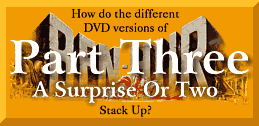 |
 |
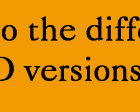 |
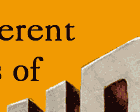 |
 |
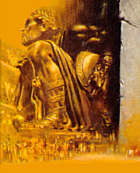 |
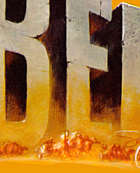 |
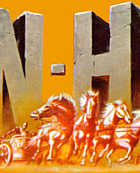 |
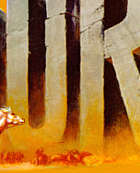 |
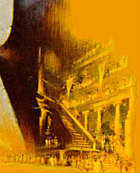 |
 |
 |
 |
 |
 |
Getting Down to Business
(Spoiler: This is going to be good news)
Aspect Ratios and Such Things
If there's one thing that people seem interested in it's the aspect ratio of a video transfer. If it's not the same ratio as originally presented in theatres then there are screams to high heaven that the DVD buying audience is being screwed. Frankly, the Curator finds most of these vocal types to be completely clueless. As stated in a number of other locations on this web site, an aspect ratio is a shape, it is not an assurance of content. Many films have been transferred at a correct aspect ratio but not using the prescribed aperture dimensions resulting in cropping of significant areas of the image. Here is how our two DVDs compare with the original film.
|
|
 |
 |
 |
This is the sort of stuff that the Curator loves to do. In 1956 when MGM gave Panavision its wish list for a 65mm/70mm photographic system, based largely on the Todd-AO specifications for film, frame sizes, and soundtracks, they wanted a flexible frame that could be printed in a variety of different exhibition formats. Ben-Hur got more variations than any other film ever made, either deliberately or by accident.
Illustrated above is a picture taken directly from a faded MGM Camera 65 print. The white boundary indicates the maximum specified projector aperture dimension. The cyan boundary shows the first DVD release and it's easy to see that there was excessive cropping. The yellow boundary is the new DVD release and it is almost exactly the same as the projector aperture dimension. This, in the opinion of the Curator, is a major improvement in the image. Other boundaries show normal 35mm extraction areas for 2.35:1 prints and for the special "letterboxed" 2.5:1 a/r 35mm anamorphic prints produced by Technicolor in 1960-1962. The projected images from all these formats would be stretched horizontally by a factor of 1.25:1. During the film's 1969 roadshow reissue, flat (non-anamorphic) 70mm prints were made with a 2.5:1 aspect ratio similar to the Technicolor 35mm prints. The Curator would prefer that this new DVD would have been made with the same 2.5:1 aspect ratio. The reason for this is that the extreme width of the picture results in loss of vertical detail in the anamorphic DVD. The information lost at the sides was deemed acceptable to MGM back in the film's initial release and subsequent 1969 roadshow run. The decision to use the full projector aperture width versus the 2.5:1 width of later prints is understandable. Warner Home Video would have been inundated with complaints otherwise.
Other than the excessive cropping of the first DVD release, (also identical to the earlier laser disc), the Curator has always considered the image quality to be excellent. Comparing the original versus new is really an eye opener however.
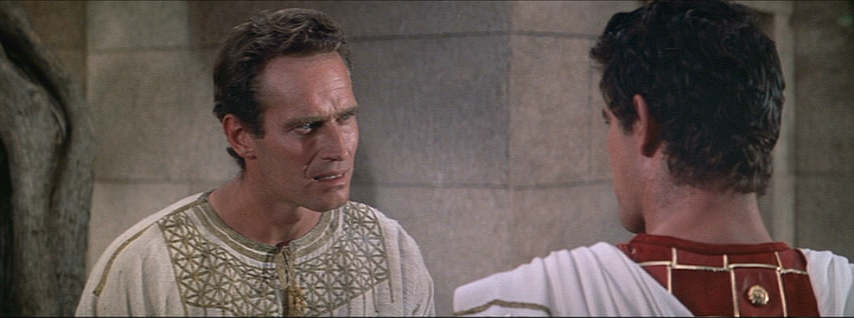
ORIGINAL DVD RELEASE
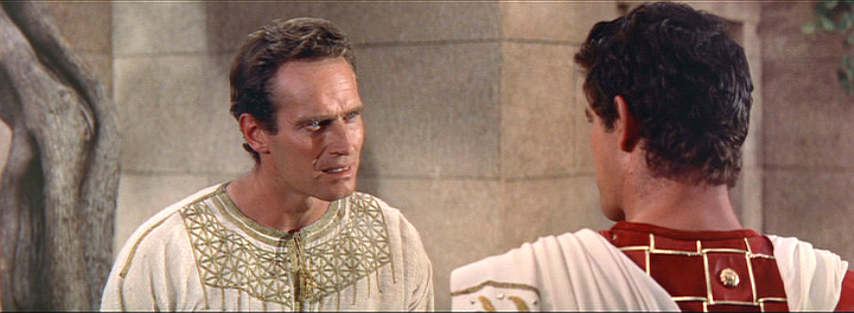
2005 DVD RELEASE
The difference in cropping is noticeable but the Curator was surprised to see that the new DVD has vastly improved color and a wider brightness range than the first issue. The new disc is simply stunning. The Curator won't carp about the cropping because this image is just so good. Seen on the WideScreen Museum's ten foot screen, it is a rich movie experience. Transfer quality compensates for the less than optimum detail created by the extreme aspect ratio. This new transfer is worth the investment even without the substantial bonus materials included. (More on that in another installment of this review.)
